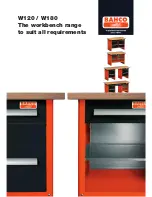
Host Design Considerations:
Application Note
NAND MMC and SD-based Products
Revision 1.0
© 2002 SanDisk Corporation
6
9/30/02, Lit# 80-11-00160
Read/Write Mode Selection
Another major MultiMediaCard and SD Card design consideration is the use of
Singleblock or Multiblock command modes.
Singleblock
mode reads and writes data
one block at a time;
Multiblock
mode reads and writes multiple blocks until a stop
command is received.
Multiblock mode takes advantage of the multiple internal block buffers present in all
MultiMediaCards or SD Cards. In Multiblock mode, when one block buffer gets full
during write, the card gives the host access to the other empty block buffers to fill while
programming the first block. The card does not enter a busy state until all block buffers
are full.
In Singleblock mode, the card enters a busy state by forcing the DAT line low when the
first block buffer is full and remains busy until the write process is complete. During the
busy state, the host cannot send any additional data to the card because the card forces the
DAT line low.
If speed is critical in a design, Multiblock mode is the faster and recommended mode.
The more blocks that can be written in Multiblock mode the better the performance of the
design. Therefore when planning the design, ensure that enough system RAM is
designed in to support the multiblock capability. The performance gain will always
outweigh the cost of the extra RAM. However, if speed is not critical—for example, a
data-logger design that records only 512 bytes of data every minute—Singleblock mode
is more than adequate.
Power and Clock Control
Power control should be considered when creating designs using the MultiMediaCard
and/or SD Card. The ability to have software power control of the cards makes the
design more flexible and robust. The host will have the ability to turn power to the card
on or off independent of whether the card is inserted or removed. This can help with card
initialization when there is contact bounce during card insertion. The host waits a
specified time after the card is inserted before powering up the card and starting the
initialization process. Also, if the card goes into an unknown state, the host can cycle the
power and start the initialization process again. When card access is unnecessary,
allowing the host to power-down the bus can reduce overall power consumption.
Clock control is another option that should be implemented in a MultiMediaCard or SD
Card design. As mentioned in the
Timing
section, if the design needs to support the
MultiMediaCard, the clock should be lowered to 400 kHz or less during initialization.
When the initialization process is complete, the host can raise the clock speed to the
card’s maximum.


































